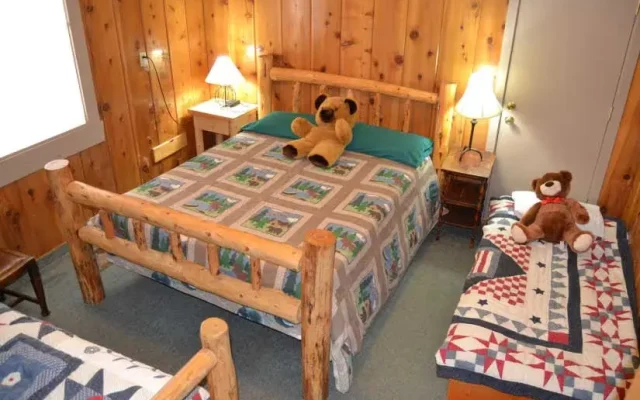Dealing with the loss of a loved one brings profound emotional challenges, and clearing out their home compounds the difficulty. Generations of belongings – from furniture and clothing to documents, photos, and hidden treasures – create overwhelming volume that stalls progress and prolongs grief. A dumpster rental offers a compassionate, practical solution by providing dedicated space for unwanted items.
This approach allows families to sort at their own pace, preserve memories, and achieve closure without rushed decisions or endless hauling. Explore a sensitive, structured path to lighten both the physical and emotional load.
The Daunting Reality of Estate Cleanouts
Estate cleanouts affect millions of families annually as generations transition. The average American household contains over 300,000 items, from everyday objects to rare collectibles accumulated over decades. In estates, this number often swells with lifelong possessions, turning homes into time capsules that demand careful handling.
The effort typically requires 150 to 200 man-hours for an average property, stretching over weeks without proper tools. Emotional attachments complicate every choice, while logistics like disposal deadlines add pressure during probate or sales.
Benefits of Dumpster Rental for Sensitive Cleanouts
Renting a Waste Removal USA dumpster centralizes removal, eliminating scattered piles and repeated trips to landfills or donation centers. The container stays onsite for days or weeks, accommodating family schedules and allowing pauses for reflection. It handles bulk debris efficiently, creating room to appraise valuables or reminisce over discoveries. This method reduces physical strain and decision fatigue, transforming a chaotic ordeal into a manageable tribute.
Step-by-Step Plan for a Compassionate Cleanout
Preparation and pacing prove essential for emotional well-being. Assemble family members weeks ahead for an initial walkthrough, photographing rooms for reference and flagging irreplaceable items like jewelry or letters. Schedule dumpster delivery to coincide with dedicated work sessions, ensuring easy access from key entry points. Begin in low-emotion zones such as attics or garages to build confidence, then progress room by room. Sort belongings into clear categories: immediate keeps for distribution, potential sales for estate auctions, donations for charities, and discards for the dumpster.
Label boxes generously and enlist helpers for heavier tasks. Load progressively – starting with sturdy items for stability – while reviewing discards periodically to rescue overlooked mementos. Integrate breaks for sharing stories, turning labor into healing. Coordinate mid-process pickups from nonprofits to prevent reclaiming space. Toward the end, conduct a final sweep for hidden compartments or safes. Arrange dumpster removal once the property stands empty and ready for its next chapter. Spreading efforts over one to three weeks prevents burnout and honors the process fully.
Managing Valuables, Donations, and Eco-Conscious Disposal
Protect legacies through thoughtful handling of special categories. Appraise antiques or collectibles via professionals early to maximize value. Direct usable furniture, clothing, and household goods to reputable charities, securing tax receipts for deductions.
Route electronics to certified recyclers and hazardous materials – like old paints or batteries – to community collection events. These separations extend the deceased’s impact, supporting others while diverting waste responsibly. Many families find solace in knowing items continue serving new purposes.
Cost Comparison and Long-Term Value
Full-service cleanouts average $1,250 nationally, often climbing higher with labor and multiple hauls. Dumpster rentals deliver similar results at lower expense, typically several hundred dollars, with greater control and privacy. The savings extend beyond finances – families report faster emotional recovery in cleared spaces, freeing energy for memorials or new beginnings.
Embrace Healing Through Action
Dumpster rentals empower families to honor loved ones while releasing the weight of the past. Local services offer straightforward scheduling and support throughout. Approach the task with patience, gather support, and step forward into clarity and peace.
Essential Tools and Supplies Checklist
Having the right equipment on hand streamlines the process and prevents unnecessary delays. This checklist ensures you are prepared for both sorting and loading.
- Protective Gear:
- Work gloves (heavy-duty for loading, lighter for sorting papers)
- Dust masks (especially for dusty attics or garages)
- Comfortable, closed-toe shoes
- Sorting & Packing:
- Durable moving boxes in various sizes (labeled “Keep,” “Donate,” “Sell,” “Shred”)
- Permanent markers and thick labeling tape
- Bubble wrap and packing paper for fragile items
- Heavy-duty trash bags for items going directly into the dumpster
- Moving & Loading:
- Hand truck or dolly for moving heavy boxes and small furniture
- Pry bar or hammer for minor demolition (e.g., pulling up old carpeting)
- Utility knife or box cutter
- Measuring tape (for planning dumpster space)
- Documentation:
- Notebook and pen for tracking donated items (for tax purposes)
- Digital camera or smartphone for inventory and appraisal photos
Dumpster Size Selection Guide
Choosing the correct dumpster size is crucial for managing costs and avoiding the need for multiple pickups. Use this guide to estimate the right capacity based on the property size and the volume of items to discard.
| Dumpster Size (Yards) | Typical Capacity (Pickup Truck Loads) | Best Suited For | Key Considerations |
| 10 Yard | 4 pickup truck loads | Small cleanouts (e.g., apartment, single garage) or limited debris. | Good for heavy materials like concrete or dirt (check weight limits). |
| 20 Yard | 8 pickup truck loads | Average 2-3 bedroom home cleanout; most standard estates with minimal furniture. | Most common size for balancing cost and capacity; ideal for moderate volume. |
| 30 Yard | 12 pickup truck loads | Large estates (4+ bedrooms) or significant demolition, including large pieces of furniture. | Provides ample space; necessary if discarding large, bulky items (e.g., pianos, large appliances). |
| 40 Yard | 16 pickup truck loads | Complete cleanout of very large properties, hoarding situations, or multi-generational estates. | Maximum capacity; ensures you only need one container, minimizing logistical hassle. |
Frequently Asked Questions (FAQs)
A dumpster rental offers a centralized space for unwanted items, allowing families to sort belongings at their own pace without the pressure of constant hauling.
The effort typically requires about 150 to 200 man-hours for an average property, often stretching over weeks without the right tools.
It centralizes the removal process, eliminates scattered piles, reduces repeated trips to disposal sites, and minimizes physical strain and decision fatigue.
Assemble family members weeks ahead for an initial walkthrough to photograph rooms and flag irreplaceable items like jewelry or letters.
Sort items into four clear categories: immediate keeps, potential sales, donations for charities, and discards for the dumpster.
It is recommended to begin in low-emotion zones, such as attics or garages, to build confidence before progressing to more personal living spaces.
Appraise antiques or collectibles early via professionals to maximize their potential value for the estate.
Direct usable goods to reputable charities for tax receipts, and route electronics to certified recyclers for eco-conscious disposal.
Spreading the efforts over one to three weeks is suggested to prevent burnout and ensure the process is fully honored.







